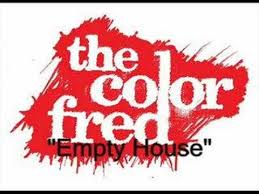If you are still trying to understand why the housing market in the United States is in trouble just read the following paragraph.
 America's home ownership rate, after holding steady for a while, took a pretty big plunge in Q4, from 66.9 percent to 66.5 percent. That's down from the 2004 peak of 69.2 percent and the lowest level since 1998.
America's home ownership rate, after holding steady for a while, took a pretty big plunge in Q4, from 66.9 percent to 66.5 percent. That's down from the 2004 peak of 69.2 percent and the lowest level since 1998. 
Slideshow: 10 U.S. Cities Where Renting Beats Buying
Now to vacancies. There were 18.4 million vacant homes in the U.S. in Q4 ’10 (11 percent of all housing units vacant all year round), which is actually an improvement of 427,000 from a year ago, but not for the reasons you’d think.
The number of vacant homes for rent fell by 493 thousand, as rental demand rose. 471,000 homes are listed as “Held off Market” about half for temporary use, but the other half are likely foreclosures. And no, the shadow inventory isn’t just 200,000, it’s far higher than that.
So think about it. Eleven percent of the houses in America are empty. This as builders start to get more bullish, and renting apartments becomes ever more popular. Vacancies in the apartment sector have been falling steadily and dramatically, why? Because we’re still recovering emotionally from the toll of the housing crash. via Diana Olick at CNBC
11 percent or 18.4 million homes in the United States are empty.
To put this in perspective there is only 329,000 homes expected to be built this year.
So lets do the math.
Used Vacant homes / New Home Construction
18,400,000 / 329,000
This means there are 55 EMPTY HOMES for every NEW HOME BEING BUILT THIS YEAR.
Now lets do one last bit of math:
Used Vacant Homes / Home Sales for 2010
18,400,000 / 5,000,000
There is 3.86 empty homes for every home sold last year.
Nearly 11 Percent of US Houses Empty
I usually find the quarterly homeowner vacancy and homeownership report from Census pretty lackluster, but the latest one released this morning was anything but.
 |
Homeownership is falling at an alarming pace, despite the fact that home prices have fallen, affordability is much improved and inventories of new and existing homes are still running quite high.
Bargains abound, but few are interested or eligible to take advantage.
More concerning than the home ownership rate is the vacancy rate. The Census tables don't tell the entire story, but they tell a lot of it. Of the nearly 131 million housing units in this country, 112.5 million are occupied. 74.8 million are owned, and that's only dropped by about 30 thousand in the past year. 38 million are rented, but that's up by over a million year over year. That means more new households are choosing to rent.
Now to vacancies. There were 18.4 million vacant homes in the U.S. in Q4 '10 (11 percent of all housing units vacant all year round), which is actually an improvement of 427,000 from a year ago, but not for the reasons you'd think.
The number of vacant homes for rent fell by 493 thousand, as rental demand rose. 471,000 homes are listed as "Held off Market" about half for temporary use, but the other half are likely foreclosures. And no, the shadow inventory isn't just 200,000, it's far higher than that.
So think about it. Eleven percent of the houses in America are empty. This as builders start to get more bullish, and renting apartments becomes ever more popular. Vacancies in the apartment sector have been falling steadily and dramatically, why? Because we're still recovering emotionally from the toll of the housing crash.
Younger Americans have seen what home ownership has done to their friends and families, and many want no part of it. Credit has become very nearly elitist. Home prices, whatever your particular data provider preference might be, are still falling.
Banks, Fannie [FNM 0.502  0.0024 (+0.48%)
0.0024 (+0.48%)  ] and Freddie [FRE 0.004 --- UNCH (0)
] and Freddie [FRE 0.004 --- UNCH (0)  ] are holding on to hundreds of thousands of properties, and we don't know exactly when or how they'll sell them.
] are holding on to hundreds of thousands of properties, and we don't know exactly when or how they'll sell them.
 0.0024 (+0.48%)
0.0024 (+0.48%) Nearly 11 Percent of US Houses Empty
CNBC real estate reporter Diana Olick:
What this could mean is that more households are choosing to rent rather than buy. (To see if that's cost-effective for you, check out this chart). With the housing Armageddon of the past few years, you can hardly blame them for sitting it out.
America's home ownership rate, after holding steady for a while, took a pretty big plunge in Q4, from 66.9 percent to 66.5 percent. That's down from the 2004 peak of 69.2 percent and the lowest level since 1998.
Homeownership is falling at an alarming pace, despite the fact that home prices have fallen, affordability is much improved and inventories of new and existing homes are still running quite high.
Bargains abound, but few are interested or eligible to take advantage.


More concerning than the home ownership rate is the vacancy rate. The Census tables don't tell the entire story, but they tell a lot of it. Of the nearly 131 million housing units in this country, 112.5 million are occupied. 74.8 million are owned, and that's only dropped by about 30 thousand in the past year. 38 million are rented, but that's up by over a million year over year. That means more new households are choosing to rent.
Now to vacancies. There were 18.4 million vacant homes in the U.S. in Q4 '10 (11 percent of all housing units vacant all year round), which is actually an improvement of 427,000 from a year ago, but not for the reasons you'd think.
The number of vacant homes for rent fell by 493 thousand, as rental demand rose. 471,000 homes are listed as "Held off Market" about half for temporary use, but the other half are likely foreclosures. And no, the shadow inventory isn't just 200,000, it's far higher than that.
Slideshow: 10 U.S. Cities Where Renting Beats Buying
So think about it. Eleven percent of the houses in America are empty. This as builders start to get more bullish, and renting apartments becomes ever more popular. Vacancies in the apartment sector have been falling steadily and dramatically, why? Because we're still recovering emotionally from the toll of the housing crash.
Younger Americans have seen what home ownership has done to their friends and families, and many want no part of it. Credit has become very nearly elitist. Home prices, whatever your particular data provider preference might be, are still falling.
Banks, Fannie (Milan: fnm) and Freddie (ASX: fre) are holding on to hundreds of thousands of properties, and we don't know exactly when or how they'll sell them.
Of the nearly 131 million housing units in this country, 112.5 million are occupied. 74.8 million are owned, and that's only dropped by about 30 thousand in the past year. 38 million are rented, but that's up by over a million year over year. That means more new households are choosing to rent.
Now to vacancies. There were 18.4 million vacant homes in the U.S. in Q4 '10 (11 percent of all housing units vacant all year round), which is actually an improvement of 427,000 from a year ago, but not for the reasons you'd think.
The number of vacant homes for rent fell by 493 thousand, as rental demand rose. 471,000 homes are listed as "Held off Market" about half for temporary use, but the other half are likely foreclosures. And no, the shadow inventory isn't just 200,000, it's far higher than that.
So think about it. Eleven percent of the houses in America are empty. This as builders start to get more bullish, and renting apartments becomes ever more popular.
Whopping 11% Of US Homes Are Empty
The vacancy sign is blazing over house divisions across the US. About 1 in 10 houses in America have no one living inside them, according to new data from the Census, CNBC reports. (Update: while technically correct, this number includes other kinds of properties like abandoned farm house. The more typically used number, the home-vacancy rate, is 2.7%, up from 2.5% the previous quarter).What this could mean is that more households are choosing to rent rather than buy. (To see if that's cost-effective for you, check out this chart). With the housing Armageddon of the past few years, you can hardly blame them for sitting it out.
On Monday January 31, 2011, 5:42 pm EST
I usually find the quarterly homeowner vacancy and homeownership report from Census pretty lackluster, but the latest one released this morning was anything but. America's home ownership rate, after holding steady for a while, took a pretty big plunge in Q4, from 66.9 percent to 66.5 percent. That's down from the 2004 peak of 69.2 percent and the lowest level since 1998.
Homeownership is falling at an alarming pace, despite the fact that home prices have fallen, affordability is much improved and inventories of new and existing homes are still running quite high.
Bargains abound, but few are interested or eligible to take advantage.
More concerning than the home ownership rate is the vacancy rate. The Census tables don't tell the entire story, but they tell a lot of it. Of the nearly 131 million housing units in this country, 112.5 million are occupied. 74.8 million are owned, and that's only dropped by about 30 thousand in the past year. 38 million are rented, but that's up by over a million year over year. That means more new households are choosing to rent.
Now to vacancies. There were 18.4 million vacant homes in the U.S. in Q4 '10 (11 percent of all housing units vacant all year round), which is actually an improvement of 427,000 from a year ago, but not for the reasons you'd think.
The number of vacant homes for rent fell by 493 thousand, as rental demand rose. 471,000 homes are listed as "Held off Market" about half for temporary use, but the other half are likely foreclosures. And no, the shadow inventory isn't just 200,000, it's far higher than that.
So think about it. Eleven percent of the houses in America are empty. This as builders start to get more bullish, and renting apartments becomes ever more popular. Vacancies in the apartment sector have been falling steadily and dramatically, why? Because we're still recovering emotionally from the toll of the housing crash.
Younger Americans have seen what home ownership has done to their friends and families, and many want no part of it. Credit has become very nearly elitist. Home prices, whatever your particular data provider preference might be, are still falling.
Banks, Fannie (Milan: fnm) and Freddie (ASX: fre) are holding on to hundreds of thousands of properties, and we don't know exactly when or how they'll sell them.


No comments:
Post a Comment